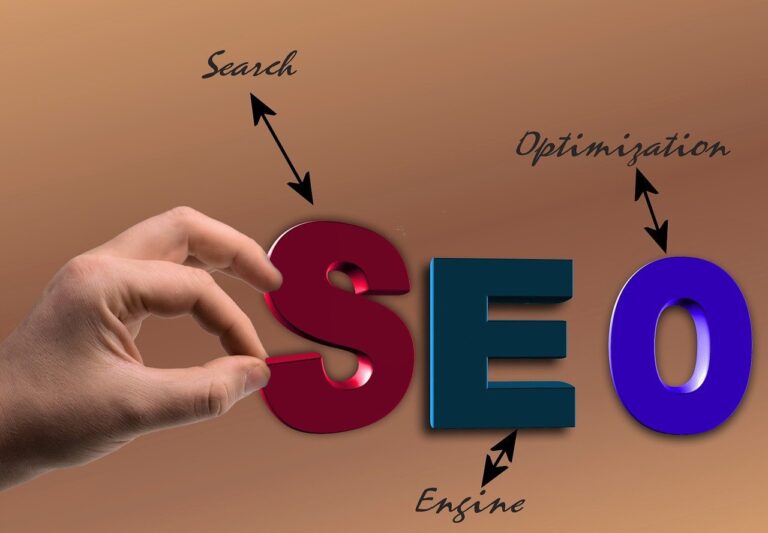With 35% of B2B businesses running their marketing in-house, companies often focus on tested and trusted strategies like outbound campaigns and email marketing. But B2B marketing has evolved far beyond these traditional techniques. Although these strategies are effective in grabbing a potential client’s attention, they are no longer the only solution, nor always the best.
Buyers aren’t just waiting for a pitch anymore; they’re looking for solutions on their own. Whether it’s using Google search or through industry reports, decision-makers now have more resources to explore than ever when making a purchase. This shift in buyer behavior means your B2B marketing approach needs to be flexible and dynamic to keep your business competitive.
In this guide, we’ll share top B2B marketing strategies to drive growth and boost brand presence, and show you exactly how the right marketing strategy can give you a competitive edge in your industry.
What are B2B Marketing Strategies?
B2B marketing strategies are a business’s plans and actions to reach and engage other companies, their customers. The ultimate goal is driving sales and nurturing long-term partnerships. Unlike B2C marketing, which focuses on quick sales to individual consumers, B2B marketing usually involves a more complex sales cycle and requires a deliberate and strategic approach.
The decision-makers in B2B are looking for solutions to complex problems, which means the strategies you choose must align with their needs and long-term business objectives.
Given this complexity, B2B marketing isn’t just about catching someone’s attention; it’s about guiding them through every step of their consumer journey. Whether through content marketing, SEO, or account-based marketing, each process is essential in guiding customers through the sales funnel.
Top 10 B2B Marketing Strategies
1. Content Marketing
In B2B, content marketing isn’t just an optional add-on; it’s one of the most powerful tools in your arsenal. However, 57% of marketers are stuck on exactly what the right content for their audience is. At its core, content marketing should focus on providing customers with the information they’re looking for at every step of the buyer’s journey.
Think of it as the foundation of your marketing strategy. Your content shouldn’t simply attract potential customers, it should engage them, build trust, and guide them through the entire process. Regardless of the style of content you create—blog posts, whitepapers, video content, visual content—it should educate and inform visitors on your site.
But it’s not just about throwing information out there and hoping it sticks; it’s about aligning your content with every step the buyer takes. A potential client just starting to explore their options doesn’t want to be bombarded with product details; they want to understand their problem better. Further along the sales funnel, however, they’ll be looking for product reviews and comparisons, detailed features, and customer reviews. Good content should be varied, thoughtful, and aligned with audience-specific needs, wherever they are in the buyer’s journey.
Pro Tip: Focus on providing real value and guiding your customers toward a decision without rushing the process.
2. SEO and SEM
With over 1.1 billion sites on the internet today, getting noticed can be a bit of a challenge. And just having a great product isn’t enough anymore; you need to make sure the right people can find you. That’s where SEO and SEM come into play. Together, SEO and SEM ensure that when your potential customers search for solutions, your business is there to meet their needs.
Search engine optimization (SEO) is the backbone of any online presence. It’s about putting your website at the top of the results when someone searches for something relevant to your business. This is vital, because if potential customers can’t find you easily, they’re likely to go for a more visible competitor.
SEO is a mix of art and science. It includes optimizing various aspects of your website, such as keyword usage, content length, and even how fast your pages load. All these factors help Google understand what your site is about and decide where to rank it.
However, SEO isn’t just about algorithms—it’s also about people. When optimizing your website, consider what your customers want to see, what information they’re looking for, and if they can easily navigate your site.
Search engine marketing (SEM) is the paid counterpart to SEO. It includes tools like Google Ads, which can help you reach potential customers actively searching for solutions like yours. With SEM, you’re buying visibility. The key to SEM and SEO is to balance your SEM efforts with a solid SEO foundation. After all, once a customer clicks on your paid ads, your website must provide the information they’re looking for. If it doesn’t, they’ll move elsewhere.
Pro Tip: Focus on long-term SEO strategies to build organic visibility while using SEM to target immediate, high-intent opportunities.
3. Account-Based Marketing (ABM)
The key to standing out isn’t casting a wide net—it’s zeroing in on high-value accounts with personalized marketing efforts. That’s where Account-Based Marketing (ABM) shines.
At its core, ABM is about getting to know your target accounts inside and out. Think of it as in-depth research: learning their pain points, growth goals, and decision-making processes so thoroughly that you can ace a quiz on them.
This in-depth research will help you create excellent campaigns that speak to your target account’s unique needs and challenges.
A standout example of ABM is Founders, a creative agency in New York. Rather than relying on the traditional email approach, they took a bold step by purchasing billboards in Times Square and posting personalized messages targeting CMOs at Forbes, Heineken, and Diesel—by name. This unique approach made waves and showcased the power of customized marketing.
Not all ABM strategies need to be so grandiose. Sometimes it’s as simple as sending a personalized email referring to a shared connection on LinkedIn, creating webinars tailored to key decision-makers, or even a detailed audit of a prospective client’s business. Each of these can demonstrate your expertise and commitment to delivering value.
Pro tip: Start small by focusing on a handful of high-value accounts. Use personalized insights from LinkedIn or industry insights to tailor your approach and build meaningful connections.
4. Lead Nurturing
Now you have leads (potential customers showing interest in your product or service), what next? Start “selling” to them? This is where many marketing strategies reach a bottleneck because they skip lead nurturing. Think of this step as watering your plant from its first sprout until it is ready to fruit; the more you nurture it, the greater your chance of a bountiful harvest.
Lead nurturing begins with identifying your marketing content and ends with conversion. It aims to bring leads through your funnel by showing them the advantages of your product while making them feel it’s a bargain they cannot miss. To do so, seek to build relationships with potential clients through relevant, valuable, and targeted interactions.
The objective is to build trust, credibility, and some level of dependence. And to stay top-of-mind while showing the leads that you understand their needs and pain points. Email marketing, social media engagement, content marketing, and personalized outreach are excellent for nurturing leads. Marketing automation that targets users with personalized emails based on user behavior has proven exceptionally efficient at improving conversion rates.
Although the process is generally the same for every client, results vary; some leads become clients much faster than others. You must also accept that some leads will never convert. This is important to help minimize the cost of nurturing leads.
Pro Tip: Lead nurturing is INTENTIONAL and TARGETED. There are no random acts or coincidences. Be intentional with every action to increase conversion rates.
5. Social Media Marketing
With 5.17 billion users accessing at least six social media platforms monthly, social media is the largest market we’ve seen. But like all markets, it is easy to waste resources (time + money) without meaningful results.
Social media marketing allows you to engage prospects across various platforms, build active communities, and generate awareness and interest in your brand. But it’s not just enough to put content out there; you must create content that grabs, and keeps, attention.
There is no fast track to this. The process is slow, but rewarding. Start with regular posts on social media platforms, like Facebook, X, Instagram, LinkedIn, and TikTok. Your offerings determine the platform that converts best, so take note of where your marketing performance is strongest. For example, high-end fashion items will sell faster on TikTok and Instagram, whereas the machines that manufacture them will sell faster on LinkedIn.
LinkedIn is a broad and effective platform to connect with founders, CEOs, and ranking executives in any company. Regularly post industry insights, engage with followers, connect with people within and outside your sphere, and provide company updates.
The goal is to establish a trusted and credible presence so your immediate community and their intersections remember your brand and what you do. Another way to do this is to host live sessions on the platform to discuss trends and offer uncommon insights.
Pro Tip: People are noticing you on LinkedIn, whether or not they interact with your posts. Keep posting and interacting with other people’s posts. Focus on delivering value, and alternate between a business tone and light humor.
6. Partnerships and Alliances
Collaborating or partnering with other brands, when done right, will benefit your brand immensely. Partnerships expand your marketing reach and increase credibility. You can partner with complementary brands, industry influencers, and non-competing companies. The key factors to consider for partnerships are the other brand’s reputation, the quality of their products/services, and how they fit your marketing goals.
First, identify complementary brands that are willing to collaborate, and then discuss every detail. Never just assume the other brand has a section covered; ask and verify.
Next, ensure the partnership is mutually beneficial. Be prepared to compromise, if necessary. . For instance, you might accept a discount offer in return for full control of the funnel and leads database.
You can start by co-hosting webinars with a partner, co-organizing contests, and even organizing physical events.
Pro Tip: Leave the door open with each partnership; future leads and potential clients may come through older funnels.
7. Event Marketing
Marketing incorporates physical and virtual/online activities. Combined, they achieve maximum impact. Live events, trade shows, conferences, and summits are powerful in the B2B industry. In-person interactions, even just casual meetings, may unlock new depths for your business.
Effective event marketing includes pre-event promotion, engaging booth design, interactive demonstrations, presentations, and follow-up actions. Draw up a schedule that allows you to participate in a major industry event at least once a year and maximize your visibility.
When bringing your brand to an event, develop a strategy to make it visible, attract attention, connect with a minimum number of experts and colleagues, and glean more insights from the top performers.
You could even explore organizing an event led by your brand or in collaboration with others. Virtual summits are an excellent way to get started with event marketing. You can then use online activities to drive traffic to offline/physical events.
Pro Tip: Have a clear goal for each event. Clarity helps align your activities and strategies.
8. Customer Retention Programs
Retaining existing customers is important for long-term growth in any industry. Customer retention is less expensive than acquiring new customers and can transform into long relationships with mutual trust, loyalty, referrals, and repeat deals. Loyalty programs are popular in most industries.
B2B marketers can implement customer retention programs and personalized emails to keep customers engaged. Focus on community building, customer communication and feedback, personalized customer experience, and omnichannel support. Make your customers a priority so they always feel cared for, and implement strategies to make them feel better off for each purchase.
Consider perks like exclusive access, discounts for long-term clients, VIP events, and special offers. Leverage referral programs to promote word-of-mouth reach.
Pro Tip: Customers come back because they trust your brand. Never lose that trust.
9. Data-Driven Decisions
Online platforms generate tons of data everyday, and this is where all marketing decisions should stem from. You should already have a data collection system that tracks and collects data, from buyer interests to purchasing habits. Use quantitative and qualitative data to enhance marketing strategies and improve lead generation and customer retention.
Data-driven marketing ensures that each step is ROI-optimized and that there are contingencies for changed plans. Collect regular data analytics for your target market and shape your strategies to align with the results.
The four steps you need are data collection, analysis & interpretation, personalization, and performance measurements. Examine your KPIs and metrics to gain insight into what works and what doesn’t and adjust strategy accordingly.
Pro Tip: Don’t forget that data analytics helps you predict trends so you can stay a step ahead of competitors.
10. Performance Metrics
The key performance indicators (KPIs) for B2B marketing vary, but they must align with the specific objectives, goals, and results of data analysis. Each stage of the buyer’s journey should have clear goals and tracking for relevant metrics, helping your team make data-driven decisions and continuously improve strategies.
These B2B SEO benchmarks are effective for evaluating marketing performance:
- Unique website/channel visitors
- Customer acquisition cost (CAC)
- Customer lifetime value (LTV)
- SEO ROI
- Average session duration
- lead-to-MQL (marketing qualified lead) rate
- Click-through rate (CTR)
- MQL-SQL (sales-qualified leads) rate
- Customer churn rate
- Monthly recurring revenue (MRR)
A good example of performance metrics in marketing is tracking lead conversion rates and ROI for specific campaigns. The cost-per-lead and ROI per campaign offer insights into campaign performance, and further analysis will show the areas you need to tweak to maximize results.
Pro Tip: KPIs are non-negotiable but flexible. You can adjust KPIs to meet changing market dynamics.
Aligning Strategies with Brand Strategy
For maximum impact, B2B marketing strategies must align with the overall brand strategy and positioning. This ensures consistency in messaging, visual identity, and customer experience across all touchpoints. Marketers should work closely with brand managers to develop guidelines for content creation, social media engagement, and customer interactions. By maintaining a cohesive brand voice and personality, businesses can build trust, credibility, and top-of-mind awareness among their target audience.
Common Pitfalls to Avoid
In the dynamic landscape of B2B marketing, mistakes can be costly. Avoid these pitfalls, which could have significant impact:
- Lack of clear objectives and KPIs.
- Inconsistent or irrelevant content.
- Overreliance on a single channel or tactic.
- Failure to adapt to changing customer preferences and platform updates.
- Lack of integration between marketing and sales teams.
- Insufficient budget allocation and resources.
- Inability to measure and demonstrate ROI.
- Ignoring the competition.
- Poor content quality.
- Marketing strategies that are inconsistent with brand identity.
Staying ahead of pitfalls
Clarity on every metric, challenge, and process allows you to identify potential roadblocks and change tactics. Clear objectives and KPIs make it easy to track performance and create brand-consistent content. Leverage multiple social media and marketing channels and always have plans in place to replace others. Invest in your sales team through incentives and regular training to ensure consistency and growth, and always have data collection and analysis in place.
Actionable Takeaways
B2B marketing helps businesses to reach and engage other companies, driving sales and nurturing long-term partnerships. Effective B2B marketing is achievable with proper planning, dedication, and making data-based decisions.
Consider these actionable steps to implement effective B2B marketing strategies:
- Define clear, measurable objectives that align with overall business goals.
- Conduct thorough research to understand your target audience and their pain points.
- Develop a content strategy that provides value at each stage of the buyer’s journey.
- Experiment with a mix of strategies and channels to reach your audience.
- Continuously monitor and optimize your campaigns based on performance data.
- Foster collaboration between marketing, sales, and customer success teams.
- Allocate resources to the most impactful strategies and channels.
- Measure and report on key metrics to demonstrate the value of your efforts.
Remember that B2B marketing is not a single process but a sum of several actions implemented over time.
Conclusion
B2B marketing requires a balanced approach that integrates tactical execution and brand-building. This balance ensures flexibility with industry dynamics and sustainability for long-term growth.
Implementing effective marketing strategies drives immediate results and revenue, while building a strong brand identity positions your business for market dominance. Staying agile and adaptable is key—regularly refining strategies based on performance data and market trends optimizes campaigns and maximizes ROI. The ultimate B2B marketing strategy delivers value to the target audience, aligns with the brand’s overall strategy, and helps achieve specific business objectives.
Cureight simplifies the process of building a high-performance B2B marketing team. Our results-driven professionals are dedicated to pushing boundaries, exploring new channels, and constantly evolving to help drive your business forward. We’re nimble, affordable, and skilled at delivering outcomes. Through our Teams-as-a-Service model, we efficiently fill technical and strategic gaps, empowering your business to scale faster, think bigger, and seize new opportunities. Contact us today!


